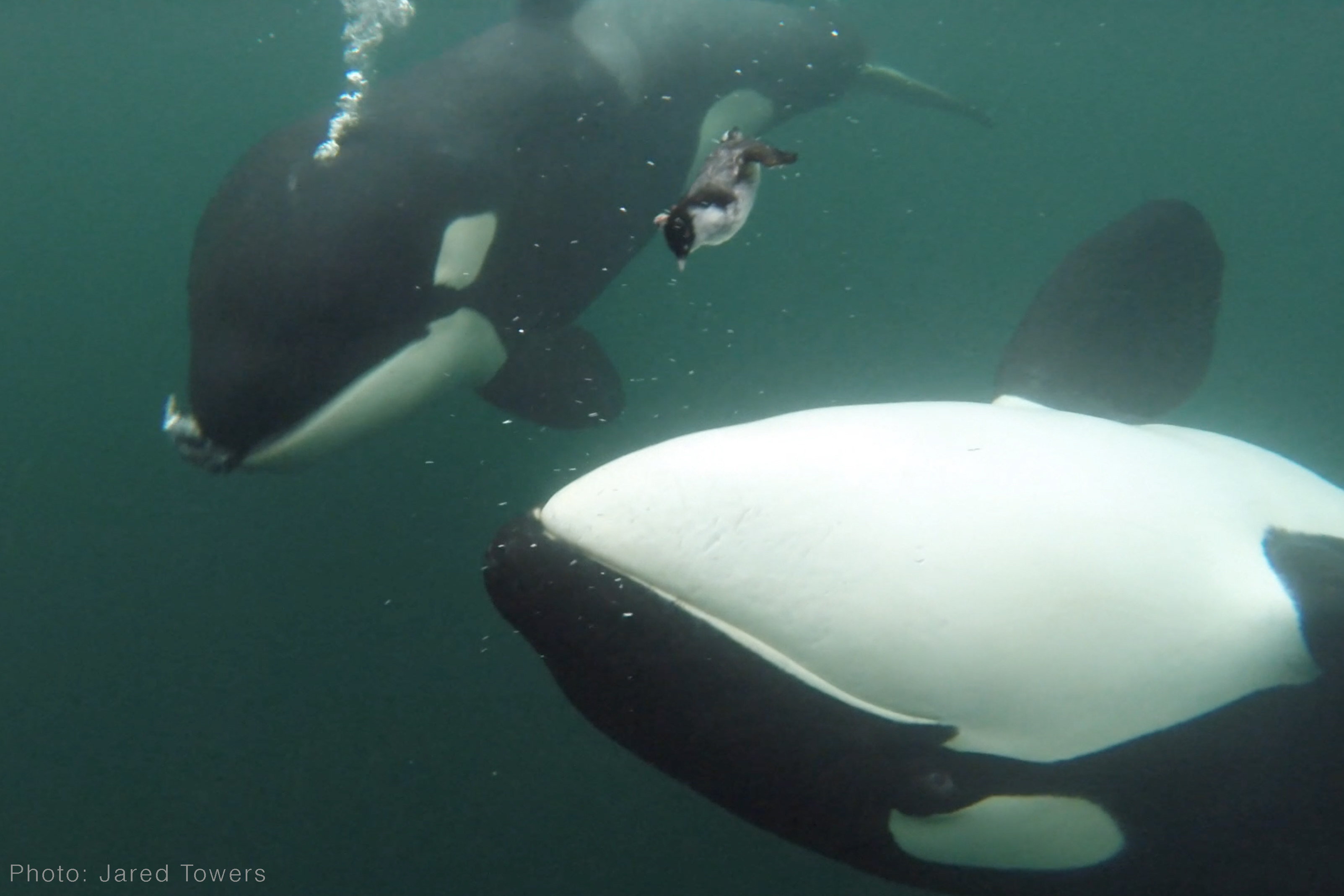Wild orcas offer humans food. Could they be trying to make friends — or manipulate us?

Wild orcas occasionally approach humans and offer us food, according to a new study — but scientists aren’t sure why.
Researchers have documented dozens of cases of orcas (Orcinus orca), also known as killer whales, dropping prey and other sea life in front of people. In almost all of the encounters, the orcas then waited to see what humans would do with their offering, and sometimes tried to offer food more than once. These offerings included fish, some whale, birds, stingrays, seaweed and a turtle.
Researchers aren’t certain what’s driving this behavior, which was documented in different orca populations over a more than 20-year period. But orcas are known to share their food, according to the new study, published June 30 in the Journal of Comparative Psychology.

Watch On
“Orcas often share food with each other — it’s a prosocial activity and a way that they build relationships with each other,” study lead author Jared Towers, the executive director of Bay Cetology, a cetacean research institute in Canada, said in a statement. “That they also share with humans may show their interest in relating to us as well.”
The researchers offered a range of possible explanations for the behavior, suggesting that offering items to humans could provide opportunities for the orcas “to practice learned cultural behavior, explore or play,” and potentially form relationships with us.
However, while the behavior seems altruistic, the researchers couldn’t rule out that the orcas were trying to manipulate the people they approached — though it’s unclear what the orcas are trying to achieve.
Erich Hoyt, a researcher at the charity Whale and Dolphin Conservation who was not involved in the study, told Live Science that the authors gave plausible reasons for the orcas sharing prey with humans.
“The study was done carefully, removing borderline cases, and the method was clearly explained,” Hoyt, who also wrote “Orca: The Whale Called Killer” (Firefly Books, 2019), said in an email. “The authors are suitably careful about the conclusions and suggesting various explanations.”
Related: Orcas filmed making out in the wild for first time

The researchers reported 34 sharing interactions from around the world, including off the coast of California, Norway and New Zealand. Towers and his colleagues included their own encounters with orcas, as well as those described to them in interviews. Some of the interactions were also caught on camera. The team only included interactions where the orcas approached humans of their own accord, when humans were in the sea, on boats or close to the shore, though the humans may have first put themselves in the vicinity of the orcas.
In most cases, humans ignored the orcas’ offering. Some of the orcas then recovered the item and shared it with other orcas, and in a few cases, returned to offer it to the human again — even trying multiple times. On three occasions, humans returned the offering, and the orcas then offered it again, according to the study.
Orcas are intelligent and communal creatures that engage in complicated social rituals, from gently nibbling on each other’s tongues to tumbling alongside each other in the marine mammal equivalent of mosh pits. This also isn’t the first time orcas have interacted with people.
For example, an orca population used to hunt alongside Indigenous Australian whalers and European whalers in Australia. However, orcas got food out of those cooperative hunts, while in the new study, they were often giving it away without a clear motive.
They can also be incredibly playful animals and sometimes toy with food and other objects in their environment. For example, researchers have documented orcas tossing around and killing baby porpoises that they have no intention of eating. Some orcas famously have a penchant for attacking boats off southwestern Europe’s Iberian coast, which again appears to have a playful component. However, the researchers found that the orcas in the new study usually weren’t playing with the food they offered.
“With all the comments about orca play behaviour in relation to the Iberian orcas bending and breaking rudders of boats, it could be easy to dismiss these [offerings] as isolated incidents representing no more than another kind of play,” Hoyt said. “But [the] authors point out that the provisioning/prey sharing happens equally between all sex and age classes, not just by the younger members who more actively engage in play.”
Different orca populations have their own dialects, similar to human language, and can develop their own unique “fads,” such as swimming around with dead salmon on their heads. The newly documented behavior wasn’t confined to a specific population or location, but the researchers did find that it only involved orcas that typically hunt and share prey near the surface, which could help explain its origin.
All of the orcas documented in the study were generalist hunters, typically eating a range of air-breathing animals like whales, as well as fish usually found near the surface. None of the cases involved orcas that exclusively feed on fish, often at depths, despite some of these orcas being very familiar with people. Hoyt said this aspect of the study was fascinating but also logical.
“Salmon and other fish are often hunted singly, not cooperatively,” Hoyt said. “The [orca] whales that hunt marine mammals, sharks and other larger prey are much more often sharing the large prey items they catch with their pods and not just because there’s plenty to go around.”
Orca quiz: Will you sink or swim?


